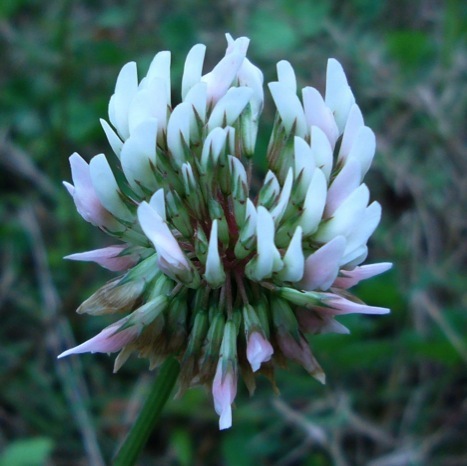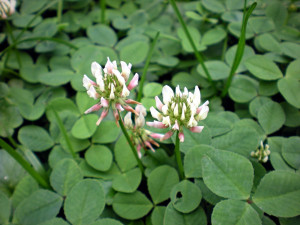Clover, Available Around The World
Hay may be for horses, but clover is for people…well…. almost.
I was forever nibbling on clover blossoms when I was a kid. I suspect I did that because my mother did that. She did that because her mother did. I don’t know how far that habit stretched back, so I don’t know if the consumption it is by taste or by example.
One of the more surprising sides of clover is that it’s in the pea family, and its blossom is actually a bunch of little pea-like blossoms, called ”wings and keels.” Clover is also a native of Europe and western Asia but has been used as a pasture crop worldwide. And while there are few pasture in the Arctic, clover grows from the top of the earth to the bottom and all around, nearly every location on the rotation. Though well-known as totally edible, from blossom to root, it is not choice “eating wild.” Some call it a survival food, and perhaps rightly so for only the blossoms are truly pleasant to human tastes. The leaves are an acquired or tolerated taste.
In reference to the blossoms, don’t select brown ones. You want young and fresh whether white or pink or red though white clover is the better tasting of them all. Besides a tea you can pan roast the blossoms until nice and crispy. The leaves are another matter. Young ones are digestible raw in small amounts, half a cup or so. Older leaves should be cooked, but I think you’d have to be hungry to eat them. It is a survival or famine food. See Sweet Clover, or Melilotus.
While it may not be that good in taste, clover can be good for you. It is high in protein, has beta carotene, vitamin C, most of the B vitamins, biotin, choline, inositol, and bioflavonoids. Clover does come with three words of warning, however: One is that quite a few people are allergic to it and don’t know it, so go easy at first until you know one way or the other. Secondly, NEVER …. did you see that word? NEVER ferment and eat any part of it. You want your clover either completely fresh or completely dried, Never in between. Lastly clover in warm climates can produce small amounts of cyanide. Here is the site address: http://www.sciencedaily.com/releases/2007/10/071001151308.htm
The botanical name for white clover is Trifolium repens. (Trifolium tri-FOE-lee-um) means three leaves, and repens (REE-penz) means crawling but not rooting. Most of the plant crawls along, only the blossoms stand up. Now, one parting measure of how humanity is getting along with nature: Clover is now legally discouraged in lawns and the like because it attracts bees and people might get stung. Frankly, I think we need less lawyers than less clover.
Green Deane’s “Itemized” Plant Profile
IDENTIFICATION: An evergreen perennial growing to half a foot, famous for its three leaves, blossom can be white, pink and red.
TIME OF YEAR: Seasonal usually summer into fall
ENVIRONMENT: Likes sunny areas and moist soil. Usually found in lawns
METHOD OF PREPARATION: Numerous: Leaves – raw or cooked as a potherb, young leaves before flowering suitable in salads or soups, can be cooked and used like spinach. Dried seed pods and flowers ground into powder used as a flour, young flowers in salads. Cooked root edible. Dried flowers best known for making tea. Dried leaves can have a hint of vanilla aroma.



